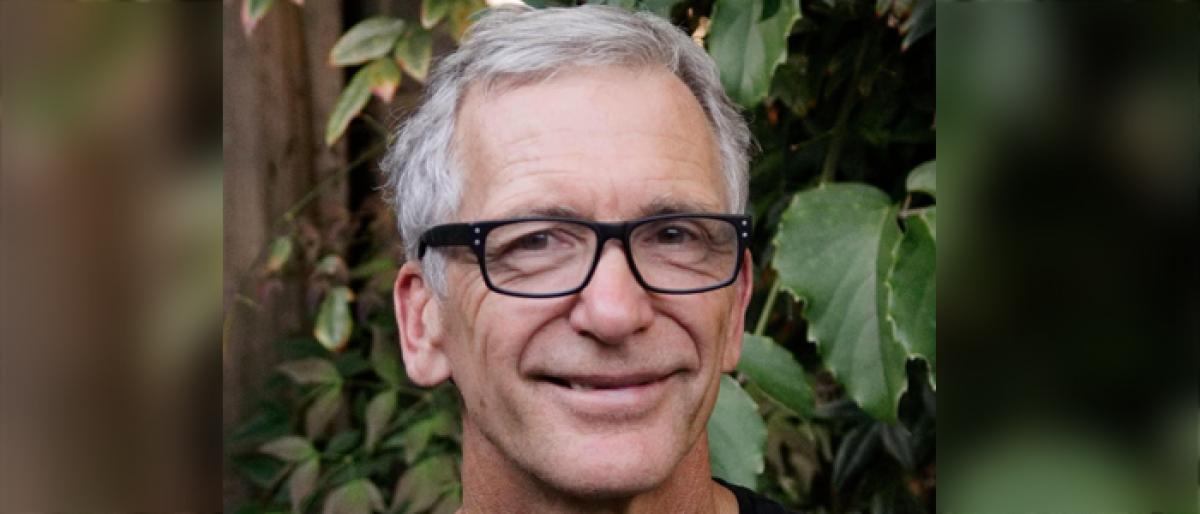Live
- Three Dead in Puttur as Car Crash
- First Look of 'O Cheliya' Unveiled in Hyderabad
- ‘The Secret of the Shiledars’ set to unveil a fascinating chapter of history
- Diksha Singh recalls receiving ‘inappropriate’ video call
- Big B opens up on being badly treated by security
- Manoj Bajpayee completes shooting for ‘The Family Man’ season 3
- Sasthana Toll Gate Braces for Mega Protest Over Toll Fee Dispute
- ‘Drinker Sai’ team shares happiness for the extra-ordinary success
- Winter Makeup Tips for Brides to Shine on Their Special Day
- ‘Mad Square’ drops chartbuster single; fans in frenzy
Just In

John Zubrzycki, a Sydneybased author, who earlier penned the bestselling book The Last Nizam An Indian Prince in the Australian Outback and The Mysterious Mr Jacob Diamond Merchant, Magician and Spy is back with another wellresearched book Jadoowallahs, Jugglers and Jinns A Magical History of India The book gives a glimpse into how Indian magic became a part of popular entertainment i
John Zubrzycki, a Sydney-based author, who earlier penned the best-selling book ‘The Last Nizam: An Indian Prince in the Australian Outback’ and ‘The Mysterious Mr Jacob: Diamond Merchant, Magician and Spy’ is back with another well-researched book ‘Jadoowallahs, Jugglers and Jinns: A Magical History of India’. The book gives a glimpse into how Indian magic became a part of popular entertainment in the society and its ascension in the West. It focuses on transformation of magician acts from the street to stage and showcases the rise of PC Sorcar.
“I was always fascinated by magic and it was a topic that was rarely touched in literature. Magic was ignored by historians. For instance, Emperor Jehangir had a huge fascination for magic and he had an encounter with jugglers from Bengal, where he was amazed by their feat, however, those descriptions were only in vernacular languages but not in English. And that served as a motivation to pen ‘Jadoowallahs, Jugglers and Jinns…’,” shares John Zubrzycki on the sidelines of the book launch in Hyderabad at Taj Krishna.
About his first exposure with Indian street magic, he says, “It was in 79 when I was in Assam and I saw this basket trick in front of Alipore railway station. This magician made a young boy (his assistant) sit in the basket and he (the magician) was stabbing the basket with swords. And at the end of the act, he lifted the boy with a sword piercing from the neck with no trickery and when I saw that I was completely floored.”
John Zubrzycki is also a journalist and researcher specialising in South Asia, in particular, India.In 2015, he commenced a doctorate at the University of New South Wales investigating the historical links between Indian and Western stage magicians.
“It was a socio-politic culture, where East met the West. During 1800s English magicians were pretending to be Indian, wearing sherwanis and turbans while Indian magicians who were showcasing their talents in England were donning tails and top hats. I liked this particular juxtaposition of that era. And I have addressed that in the book,” he says.
“Also, at that time in the West, there was a great demand for exotic people from across the world. People were shipped from Africa, Asia, etc. And fascination for magicians was also huge and many started recruiting magicians from India to perform at exhibitions and fares in the West. However, after the contract was over these artistes were dumped on streets and they lived life in destitution,” he adds.
John informs that while writing the book he went through the archives in New Delhi, Kolkata, Mumbai, Washington, New York and London. “It was an enriching experience,” John concludes, who is planning to write one more book, which will feature a prominent Indian from pages of history.

© 2024 Hyderabad Media House Limited/The Hans India. All rights reserved. Powered by hocalwire.com







